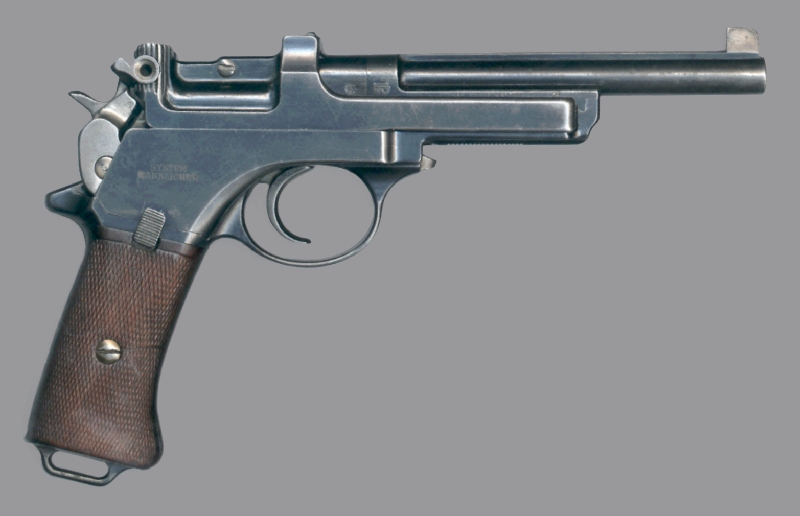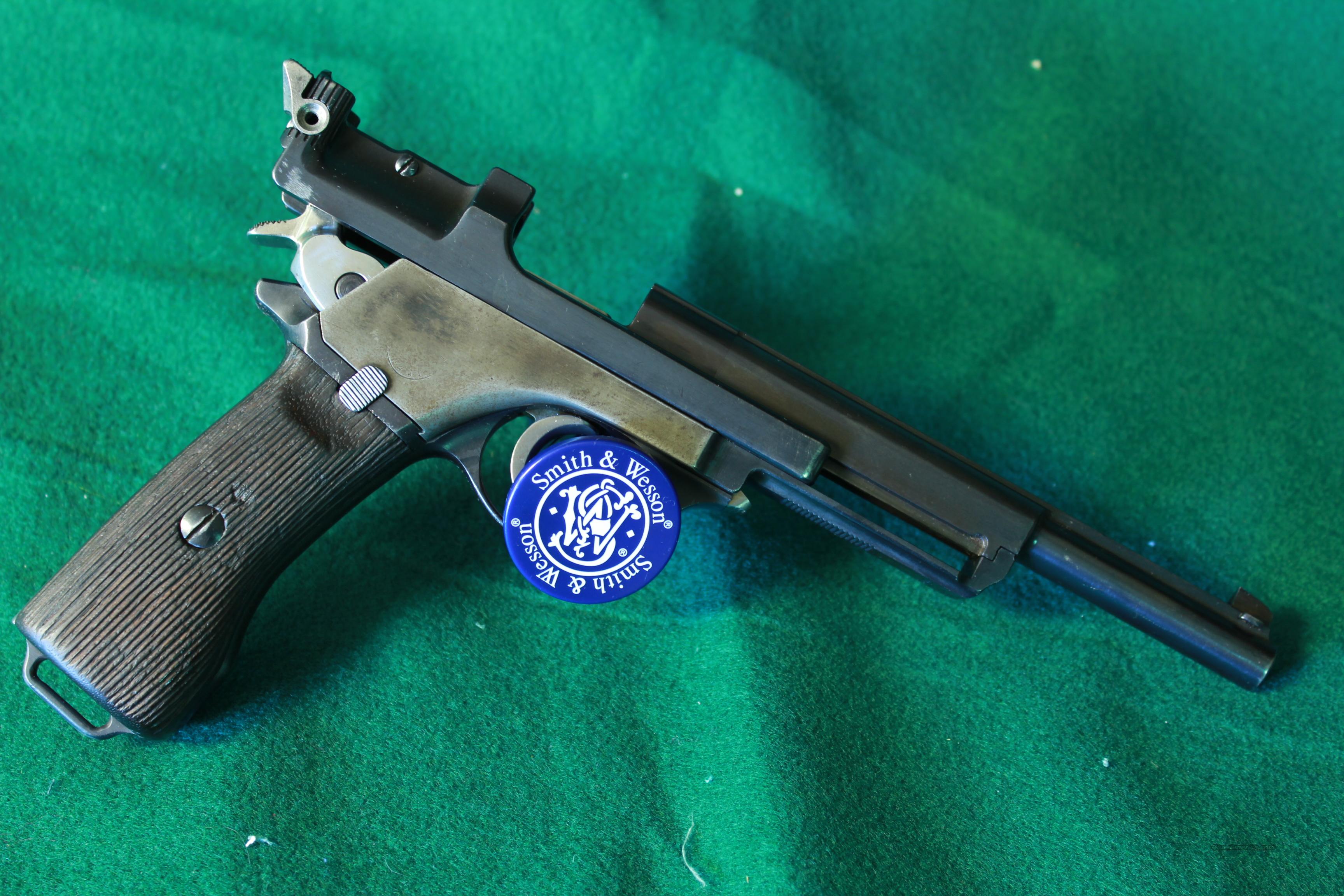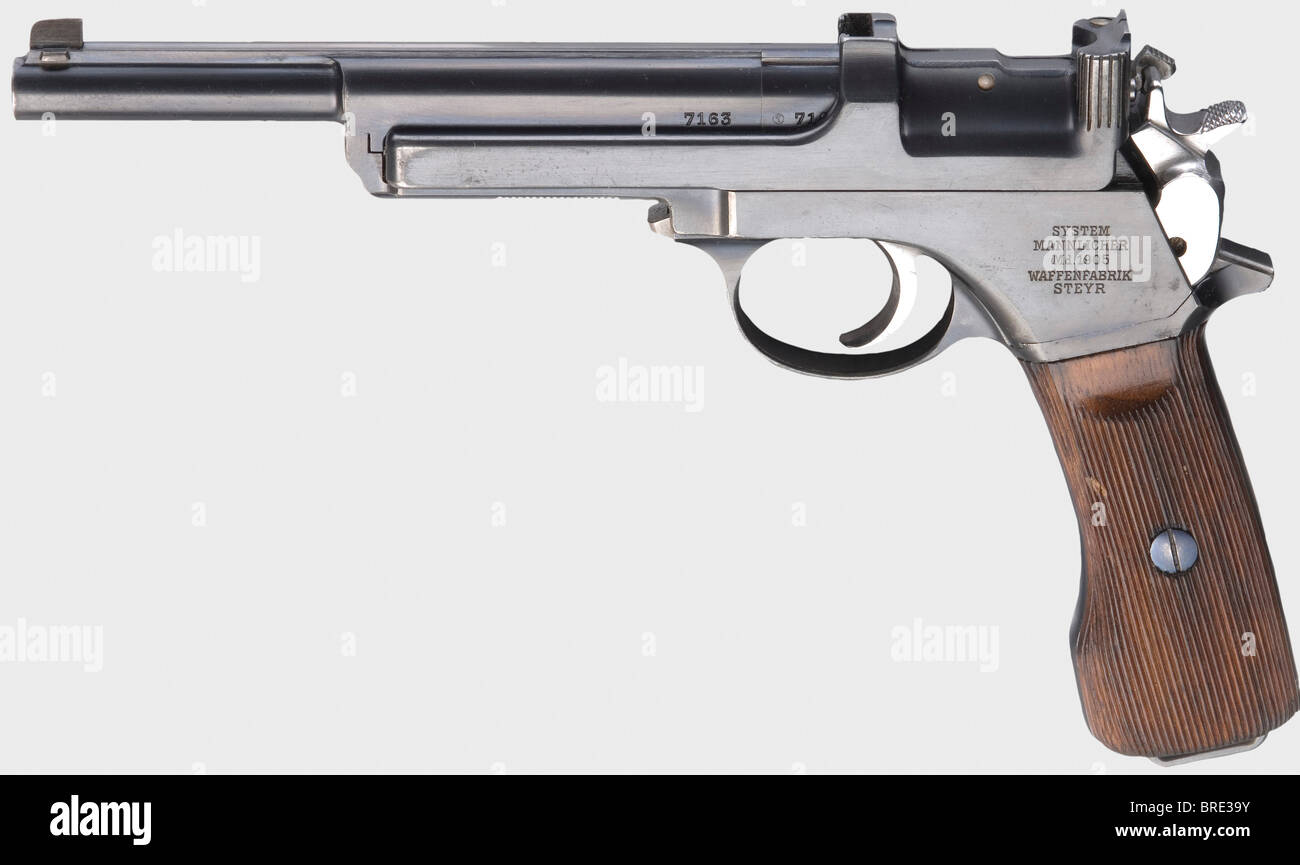

Full SN is repeated on the left side of bbl, chamber, and on the bottom of the sideplate, just forward of the serrations. Narrow trigger as often found in early production. rifle in 9×56.Pocket model M1905 with a 4-3/4” bbl having drift adjustable front sight and fixed rear sight. So, have the pistol, an original holster, 2 stripper clips and an original box of shells….got the full set. like a broomhandle will do)…andyway, you slightly pull the hammer down and the slide closes…beautiful design. One very neat item….when the bolt is back you can safely load a single cartridge into the magazine…and the bolt doesn’t shoot forward (e.g. After all, this was just testing for function. The rest of the shooting was done in the “Pimp technique”…basically holding the pistol horizontally so the brass went into the open catcher.

Finding small brass cases is a challenge. Main pain….the brass is tossed 8′ straight to the rear…what a pain that is. Both worked great, so I’ll be using the 2.6 for less pressure on the pistol. I used the Speer 7.65 bullets and tried 2 different loads…one of 2.6 grains of Unique, and one of 3.2 grains of Unique. 3 different companies make the reloading dies (I used the CH4D dies, they were the cheapest at $103). Anyway, there is brass already available for the 7.65 Mann. I do have a box of the old Argentine rounds, they even came with the “Packed by so and so” enclosed in the box…amazing. I took my 1905 Mannlicher pistol out yesterday to the range. The tackle seemed as working but in fact, the short barrel needed no additional breech closing mechanism rather than slide mass. 45″ ACP pistol, “Thomas” as using a lever in shape of a grip safety and inserting in a cam under the slide when squezzed. Another similar attempt by a Spanish pistol “Campo Giro” was made later as using coil spring with much worse results. At instant of firing, the frame jumps forward as affected by temporary plugging of forwarding bullet and slide starts to move to opposite direction as being pushed back by empty case and, the mainspring through inertia, may not adapt itself even if its elasticity to manage lodging its cammed cut within twice speed time interval. Mannlicher’s is located at right side at under the slide end as filling a small cut under tension of upper arm of main spring. But friction type delay systems supported by spring force, are not quite effective. The designer, probably the most fertile firearm genius of all time, had worked the layout like laces. Those Mannlicher pistols are piece of arts. Maybe imitation is the sincerest form of flattery. The Parabellum wasn’t on the market yet, so there was a definite “market segment” for pistols like the Steyr-Mannlicher and its Spanish “lookalikes”.Ĭome to think of it, the oddball Spanish Jo-Lo-Ar blowback, with no triggerguard and that freaky-deaky cocking bar hinged to the slide, looks a lot like the Steyr-Mannlicher “impersonators”, even though it arrived a decade later (mid-1920s). Once you subtract John Moses Browning’s designs from FN and Colt, the remainder were fairly big, bulky pistols like the Mauser c/96 or ultra-small pocket guns in. It wouldn’t be surprising when you consider how little serious competition there was at the time.

I can only assume that before WW1, the Ster-Mannlicher pistol was a hot property in Europe. Later on, they copied the Colt 1911 (Llama Extra, Star Super, etc.). The Eibar makers tended to copy whatever was popular at the time. By his early 30’s, Julian had obtained several firearms patents in Spain. Sometime around 1905 he worked for Gárate, Anitua y Cia and helped design their La Lira pistol, which was a copy of the 1901 Steyr-Mannlicher with a removeable magazine. Bonifacio’s younger brother Julian (1875-1948) studied business in Bilbao and eventually became a firearms designer. Father and son both worked for a time at the Quintana Hermanos factory, making revolvers. His son Bonifacio (1859-1951) studied metallurgy in Madrid and later returned to Eibar to learn gunsmithing. By 1880 he had started his first business manufacturing muzzle loading guns. José Cruz Echeverría (1833-1909) learned gunsmithing while working for the Orbea Hermanos company of Eibar in the mid-19th century. Yes, and it’s not surprising, as they all had the same designers


 0 kommentar(er)
0 kommentar(er)
